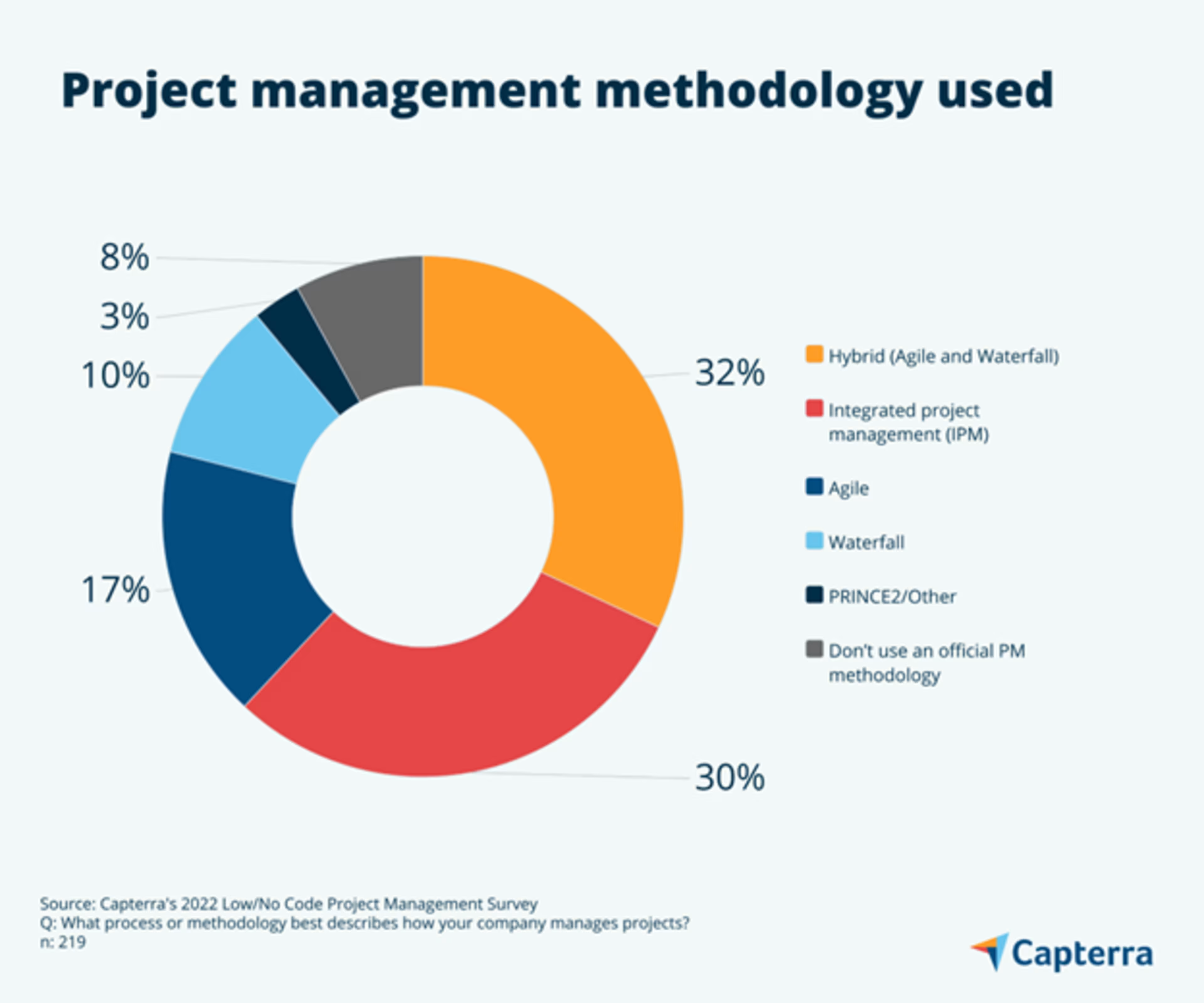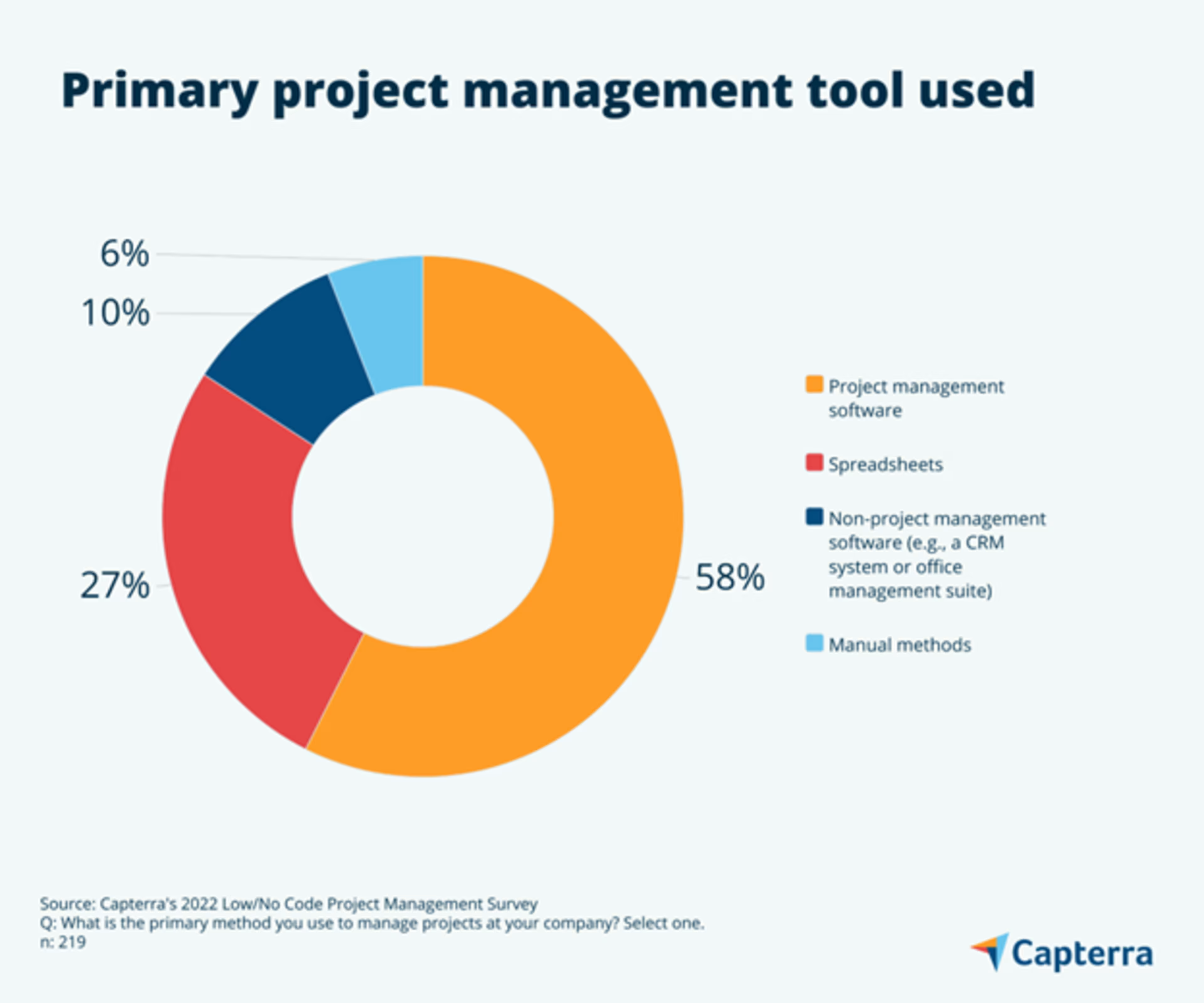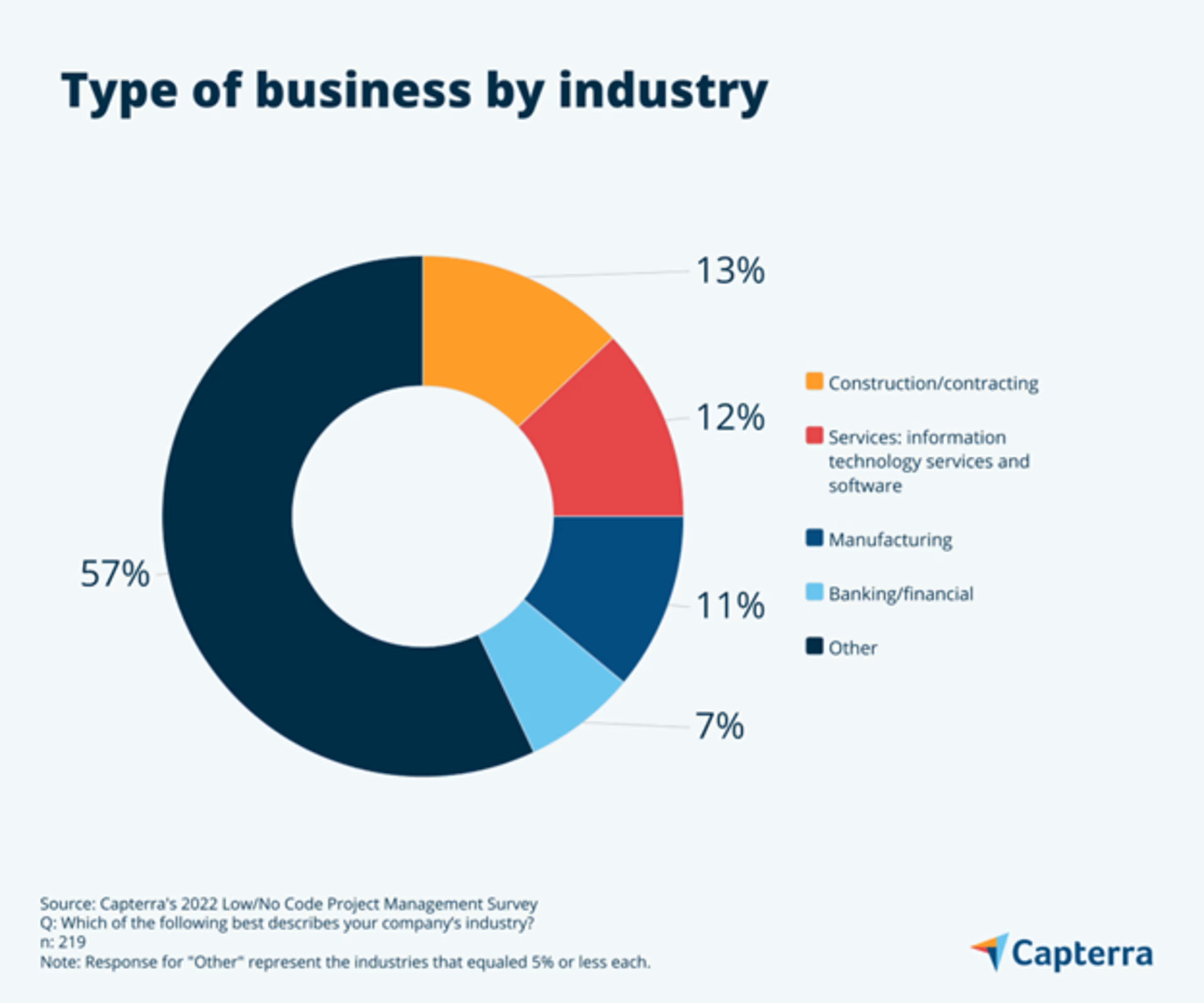69% of businesses use this approach, and they’re saving weeks of time and tens of thousands of dollars by doing so.
It’s tough to compete for a handful of talented engineers against a company with the resources to hire hundreds. According to a recent Gartner survey[1], IT executives report that the talent shortage is the most significant adoption barrier to 64% of emerging technologies, compared with just 4% in 2020.
So what options do you have? Enter low-code and no-code software development, where non-technical employees can design and deploy software modules with minimal coding experience, saving you time and money while still getting your teams the software tools they need. But low-code or no-code development doesn't mean a free-for-all, where anyone can deploy new modules whenever and however they want.
Most of these efforts still require the leadership of a project manager and the rigor of a traditional project in order to make sure the deliverable satisfies the requirements, is well documented, and the correct change management steps are taken.
So what does this actually look like? In our Low-Code/No-Code Project Management Survey*, we surveyed 319 project managers and found that 219 of them have experience with low-code or no-code projects. We picked their brains about their experience with low-code and no-code software development to understand the benefits and challenges. Throughout this report, we’ll provide insights, tips, and recommendations for project managers looking to start using a low-code/no-code approach.
/ Key highlights
69% of project managers say their company uses a low-code/no-code technique for software development at least some of the time. Another 15% have plans to do so in the near future.
A majority of low-code/no-code projects show time and money savings.
69% of PMs use a low-code/no-code approach to save time, and 63% save at least one week in their last project.
62% of IT PMs use it to save money, and 39% saved at least $10k in their last project.
60% see higher productivity, and 50% report decreasing costs by using the approach. But half of PMs report overall complexity/learning curve of the development process as their top challenge with it.
What is low-code and no-code software development?
Low-code software is a broad term referring to the front-end configuration and customization capabilities that can be offered in any type of software. These capabilities provide the building blocks or widgets needed for app development that can be performed by a user with little to no coding experience, all within the software tool.
For example, many of the website makers available today, such as Wix and Squarespace, are low-code website building programs. Anyone can design and launch a blog or retail website with these programs even with minimal technical experience as the tool walks you through how to build the webpage and provides pre-made lines of code for advanced personalization.
No-code software typically requires less coding skills than with low-code software. Sticking with the example of a website builder, a no-code platform could be designed with more of a “drag-and-drop” approach to building the webpage.
Here are the top benefits of using a low-code/no-code software development method for some projects as reported in our survey:
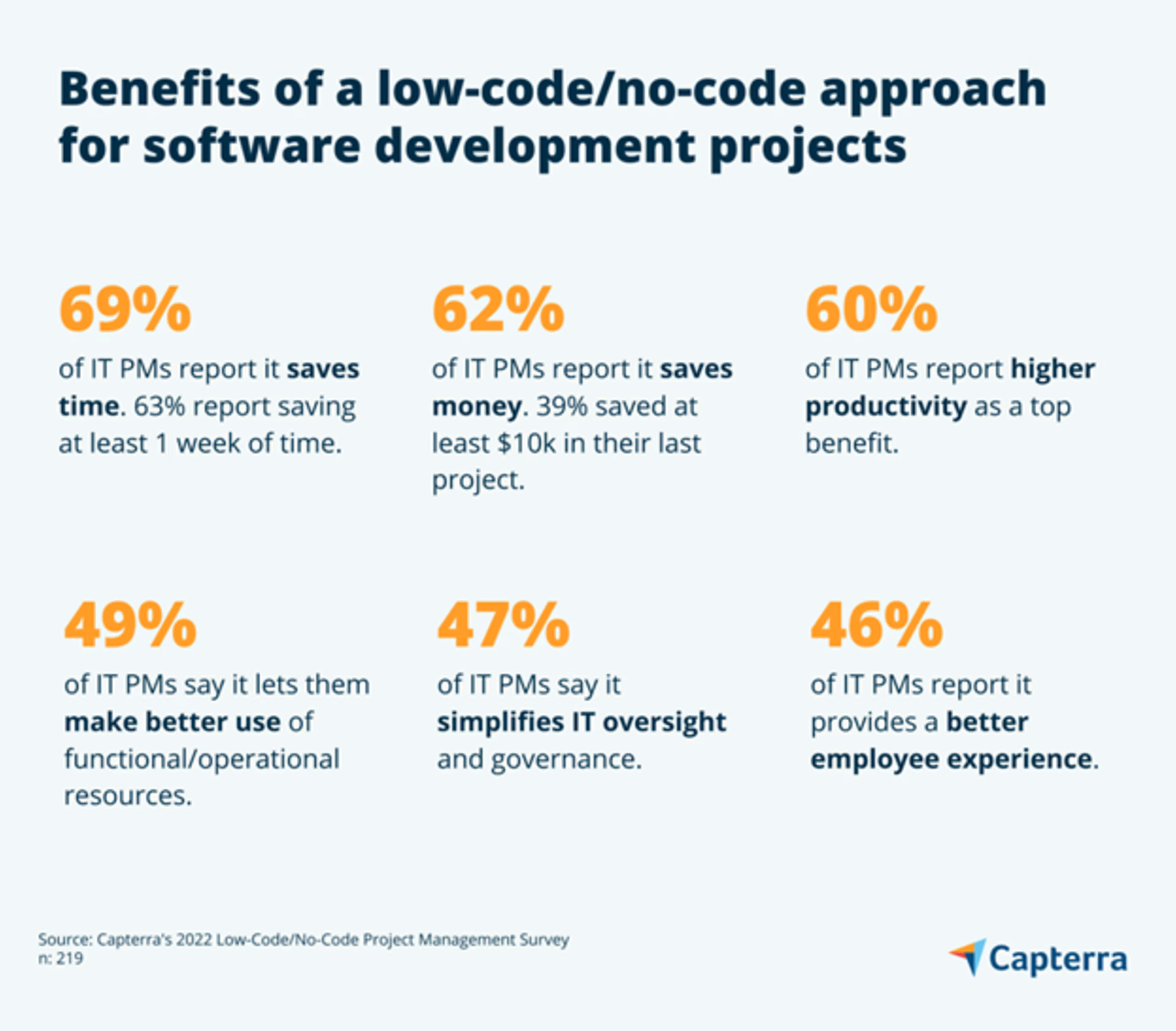
Tips for managing low-code/no-code projects
Whether you’re just getting started with this new method or if you’re looking to improve upon existing processes, below we share our top tips for how to successfully lead these efforts.
Know which systems are well-suited for this approach
Not all software projects can or should use a low-code/no-code technique for development. In fact, we’d say most requests you’ll get won’t be a good fit. Thirty-one percent of respondents say the limited customization capabilities of their software is a top challenge for using this approach. And of the companies that aren’t using this method, about one in four say their current software doesn’t offer the capability.
To make identifying which efforts would benefit easier, start by reviewing the low-code/no-code capabilities of your current software tools. Talk to your client success or customer support representative about the low-code/no-code functionality provided in each of the tools you get the most change requests for. Hopefully, they’ll be able to get you started and/or provide a list of common modules and functions that their other clients that are similar to you are building on their own in their system.
If you’re not sure which systems to start with, here are the top three software types PMs report using low-code or no-code efforts for:
Customer relationship management (CRM) software (53%)
Collaboration software (43%)
Project management software (37%)
If your company uses one or more of these, it’s probably a safe bet to start with them.
Establish thresholds for governance
More than half of PMs (52%) say their IT steering committee or equivalent reviews all projects involving IT systems. Thirty-one percent of PMs take the approach we recommend and have their committee review low-code/no-code projects when they meet established thresholds. In order to really get the benefits of this process, thresholds should be established for when a committee of senior leaders needs to review the effort.
Example thresholds for whether a project should be reviewed by a steering committee or equivalent include if the request requires:
More than 40 hours of development work
An integration to another system
Gathering, storing, or sharing sensitive information
Funding of $10,000 or more
What is an IT steering committee?
An IT steering committee is the group of technical and business leaders who establish the strategy and guide the execution of IT systems and projects. This includes reviewing and approving IT project goals and funding. At some businesses, this is a formal committee that meets regularly to oversee all projects and initiatives, but in smaller companies it could just be the CEO and head of IT. You can learn about how to become more influential at this level of strategic planning in my last report here.
Define the development process
The top challenge of low-code/no-code development projects reported by 50% of survey respondents is the overall complexity/learning curve of the development process. Support your team by having a clearly defined project plan just as you would for a traditional IT project. Document and share the following information:
The task list and timeline for all work, including design and testing
List of all key stakeholders’ roles and responsibilities
Scope of work, including all requirements and the definition of “done”
Processes for task management and change requests
Cadence and objectives of team meetings
Not every request for software functionality will be a good fit for a low-code/no-code approach, but when it is, you can follow these six steps to see the project work through.
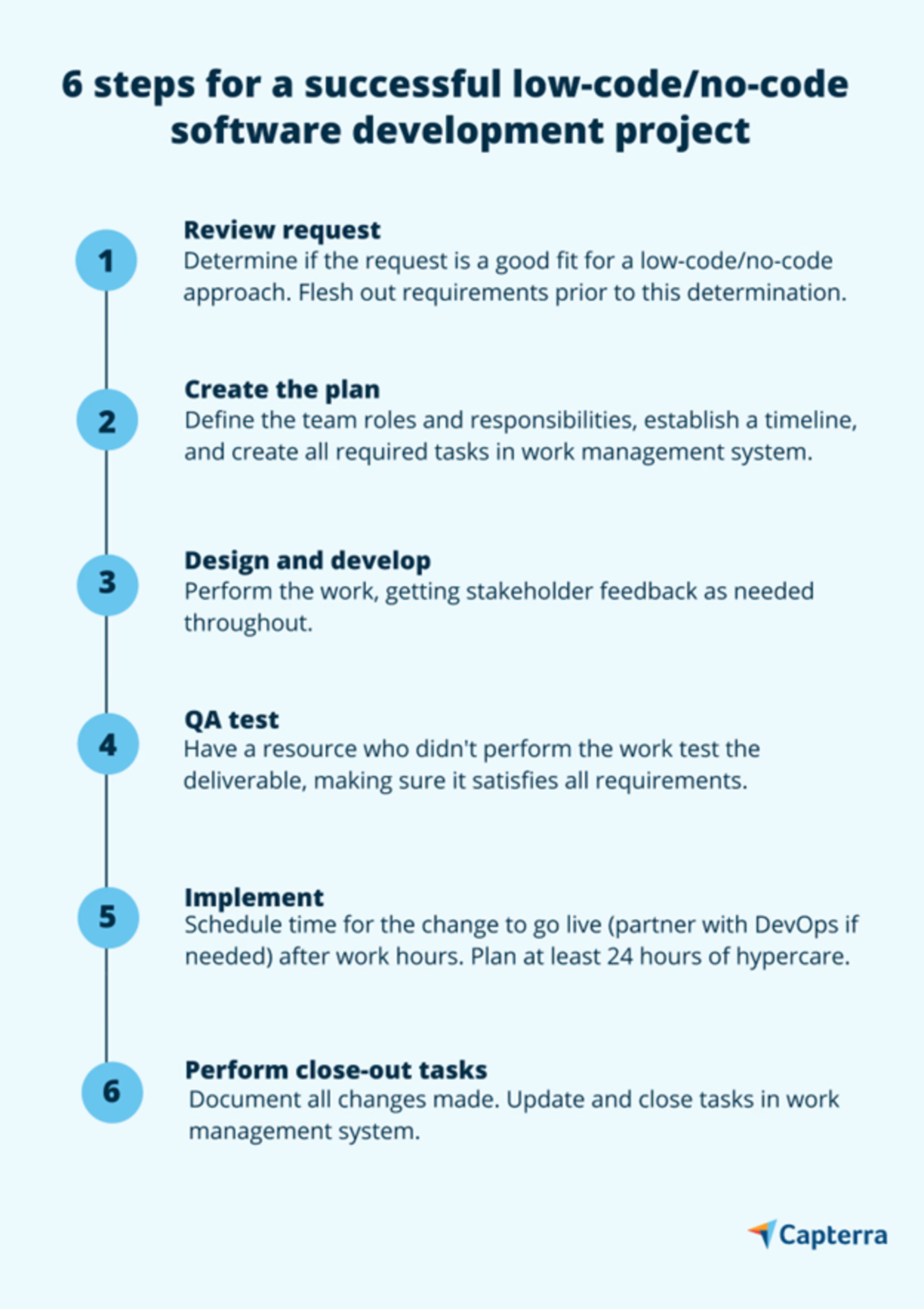
Now let’s take a look at who can and should be performing this work for your projects.
A deeper dive into who performs low-code/no-code work
Thirty-nine percent of PMs who use a low-code/no-code approach for software development say their top challenge is the lack of personnel/talent to effectively perform the changes. And, the PMs whose company isn’t currently using this technique say their top reason is a lack of personnel/talent to effectively perform the changes (39%). So how can businesses address this challenge to fully reap the benefits of the lowering barrier to entry that low-code/no-code development has to offer?
Let’s first look at the breakdown of who is currently performing this work:
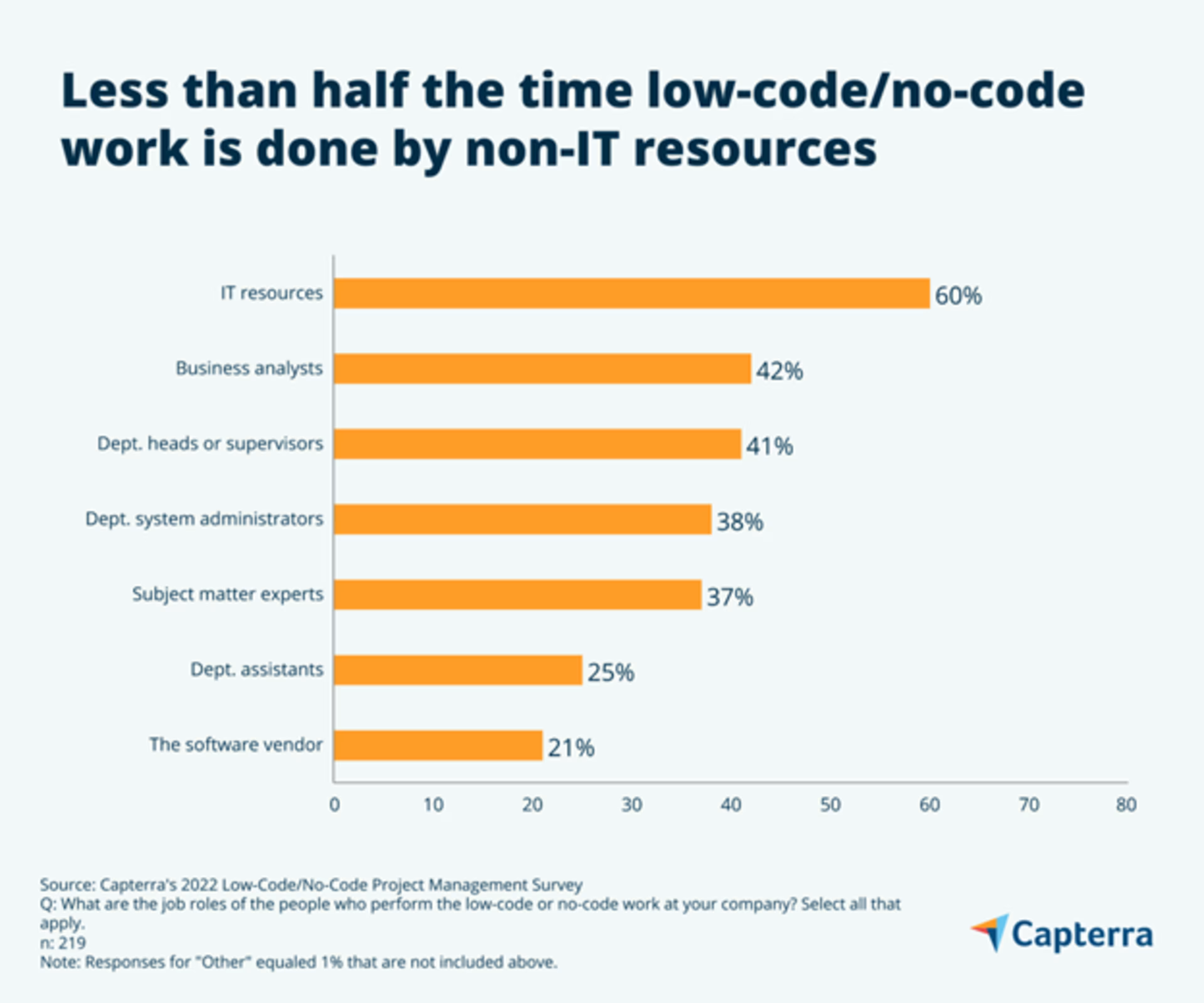
As you can see from this chart, IT resources are still predominantly the ones doing the low-code/no-code development work, with business analysts (BAs) coming in second (42%) and department heads or supervisors third (41%). This is likely the reality for several reasons, but a main one is the low-code/no-code method is still new and many companies are hesitant to allow non-IT resources to make changes to software systems. In fact, of the businesses not using a low-code/no-code approach, 23% cite a fear of risks and mismanagement of functionality not built and tested by IT as the reason why they don’t use it.
What you can do:
Train business analysts (BAs), or someone with a similar function, and department system administrators on the low-code/no-code capabilities of the tools their teams primarily use so they can perform the work. Even though a BA won’t typically have deep technical knowledge or coding experience, what they do have is actually much more important for low-code/no-code work: they’re business process experts.
By design, the front-end configuration functionality (aka, low- and no-code capabilities) offered by software vendors provides guardrails for non-technical resources to make changes, build out modules, test, and deploy new features safely. Meaning they shouldn’t even be able to make changes that affect the sources of truth or make other high-risk changes to your software systems.
A business resource has the understanding of how operations use the software being developed upon and know the challenges their teams face with the current functionality. This makes them well suited to design and build new modules. Lastly, we do recommend having them partner with an IT resource for a review of their designs and to help test, especially for the first few rounds of low-code/no-code development work.
That’s it! Now you’re ready to help your business start or improve upon using a low-code/no-code approach for software development. Throughout this report, we shared recommendations, but here they all are together for quick reference:
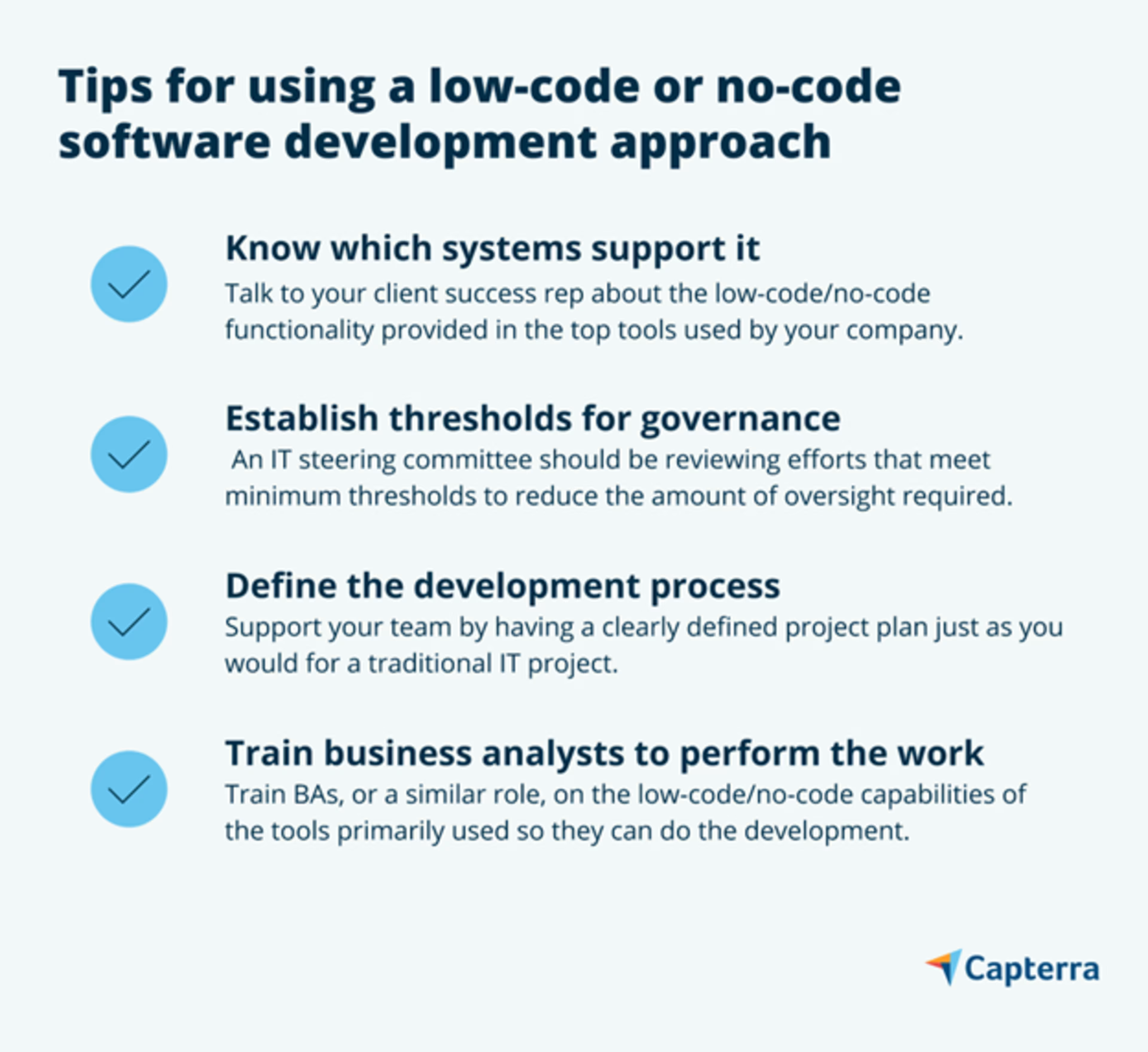
Survey demographics
If you’re anything like me, you’re curious about who took our survey and want to know the demographic info to compare to your situation. We’ve laid it out below.
